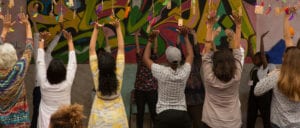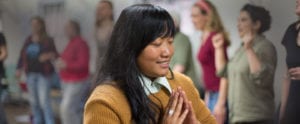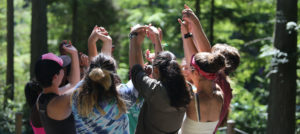Youth employment is at a 50-year high globally in 2012 with more than 1 in 10 young people out of work. Sadly, the UN has officially announced that things are only set to get worse. Young people have never been more in need of support.
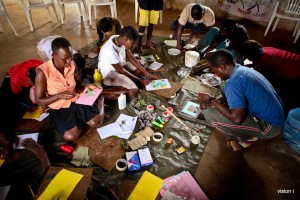
We spoke to leaders from camps based on the Creative Empowerment Model in India, Uganda, Canada, and the US to hear their perspectives. “We have experienced severe violence and war in recent years,” says Cyrus Kwalya, a facilitator at a camp in Northern Uganda held in association with local organizations Hope North and InMovement. “The war has left us with a lack of access to education. Many young people are completely unable to read or write.”
In India, where our partner Dream A Dream runs youth camps, facilitator Suchetha Bhat reports similar problems. “Half of India’s youth are deprived of their fundamental right to education,” she says. “Every day, 13.4 million children between the ages of six and fourteen are out of school. Of the children that do enroll in school, 70% drop out by the time they reach the secondary level. India ranks close to the top worldwide in numbers of child laborers.”
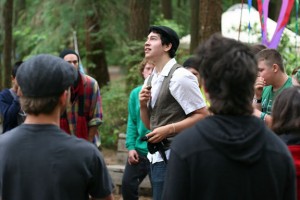
In Canada, Power of Hope camp facilitator Becky Renfrow reports, “We have a downward turning economy in which opportunities for working class people continue to decline. Self-harm, clinical depression, and eating disorders are endemic in North American youth culture.” US camp facilitator Thomas Arndt saw evidence of similar problems. “They are collectively dealing with isolation and unhealthy environments.”
For Becky, there is a huge lack of understanding around the needs of youth. “There is an absence of positive opportunities for young people to know themselves and express their needs and emotions in healthy ways. These Creative Empowerment camps are all about giving them a way to do that.”
US facilitator Thomas Arndt agrees. “The magic of Power of Hope is, above all else, the creation of an absolutely and unconditionally supportive community.”
“The program gives youth the opportunity to think and talk about the issues that are affecting them and their communities,” says US facilitator Dev Majkut. “It also gives them the chance to develop creative skills they can use to address those issues. From violence, to racism or environmental degradation, these youth are really committed to addressing the problems they see and working towards social change.”
In Uganda, where the camp included ex-child soldiers and victims of the violent civil war, Cyrus was amazed by the changes that he saw in the young participants. “When they arrived, many of them were very shy and some of them were really reluctant to speak at all. In a matter of days these young people seemed to totally transform. I was completely blown away.”
“Camps using the Creative Empowerment Model offer young people an incredible opportunity to be themselves and to be accepted and embraced,” says Becky. “Camp extends an invitation and opens a space in which they can experience success in taking small creative risks. By the end of the week, the youth feel confident in taking greater risks and offering authentic support to others. In effect, they have learned to be active members of a supportive, authentic community.”
Alan Wong, a facilitator at the Culture Jam in Oregon was similarly inspired by the enthusiasm of the youth. “One young participant told us that Culture Jam had changed the way he looked at life. He left us with the statement ‘I CAN and WILL make a difference in the world’.”
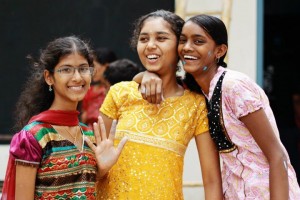 “The unique power of the Creative Empowerment Model is that it creates an environment in which young people have access to their innate brilliance,” says Alan. “It is important not to underestimate how essential this experience can be for individuals, communities, and the world. As one Culture Jammer put it, “You have saved me. Thank you so much. My life is forever changed.”
“The unique power of the Creative Empowerment Model is that it creates an environment in which young people have access to their innate brilliance,” says Alan. “It is important not to underestimate how essential this experience can be for individuals, communities, and the world. As one Culture Jammer put it, “You have saved me. Thank you so much. My life is forever changed.”
Suchetha agrees that exposing young people to their creative potential has transformative effects. “Facilitators who are trained in this model empower youth to make positive life choices, express themselves, commit to their own learning, and become leaders in their families and communities.”
Next summer we hope to reach even more young people around the world. We’re currently working with youth organizations in five continents to increase our network of trained practitioners who are able to bring the Creative Empowerment Model to young people in their region. If you would like to be part of this movement, contact us on Facebook or take a look at our upcoming trainings.
“I saw clearly this summer that, even amidst the seemingly overwhelming array of issues that young people care about today, with intention, planning, community, hope, and hard work, young people are incredibly capable of making a difference,” says Thomas. “They are teaching us to take one step at a time, and want and need only our love and support to travel this road with power.”

